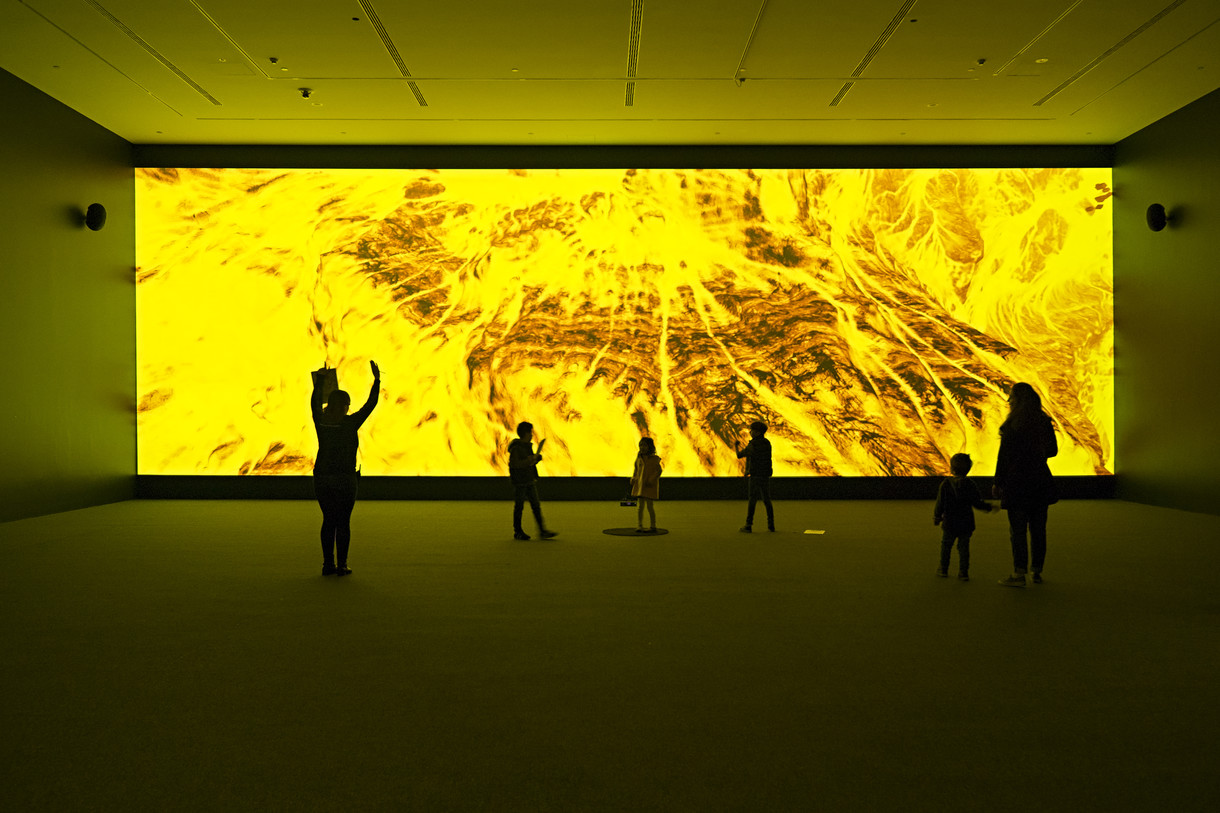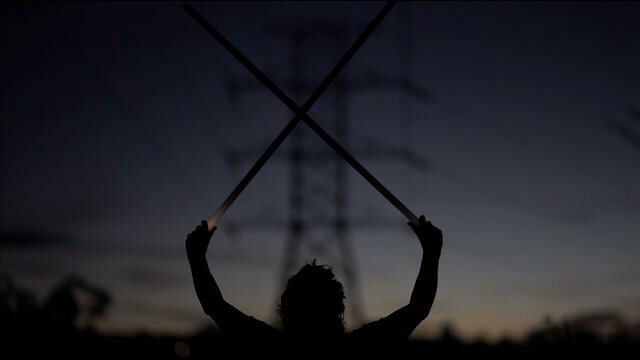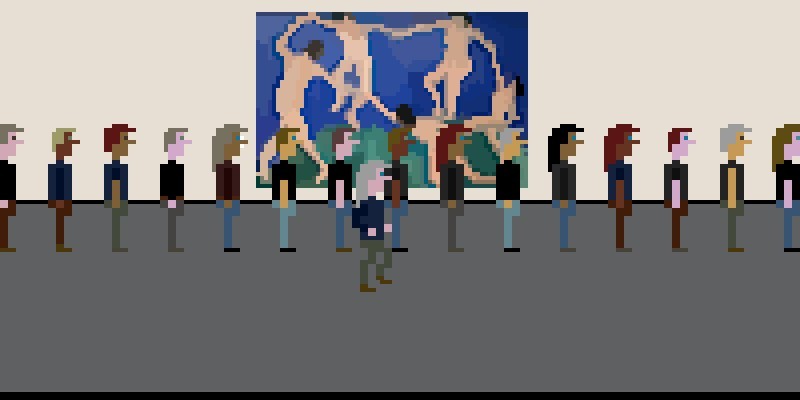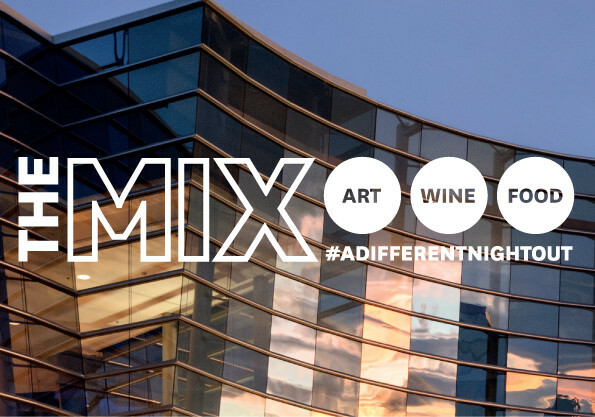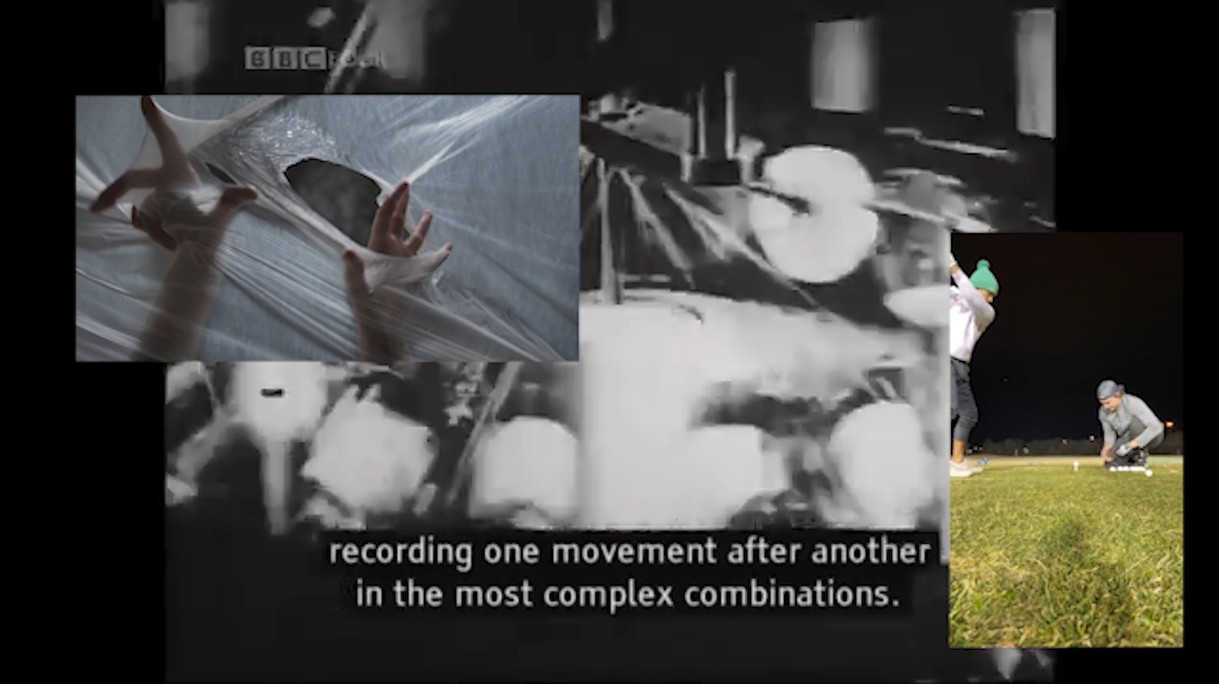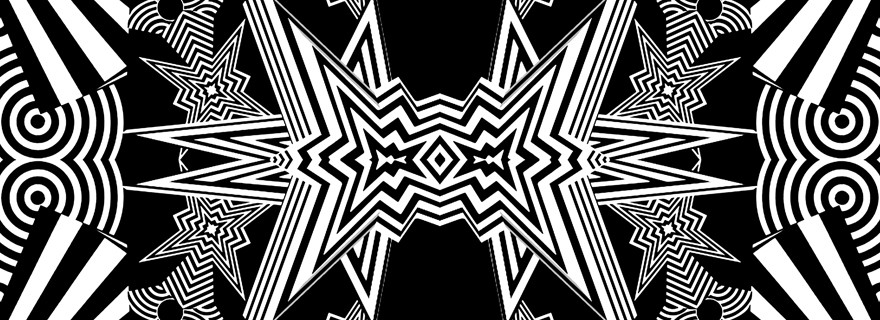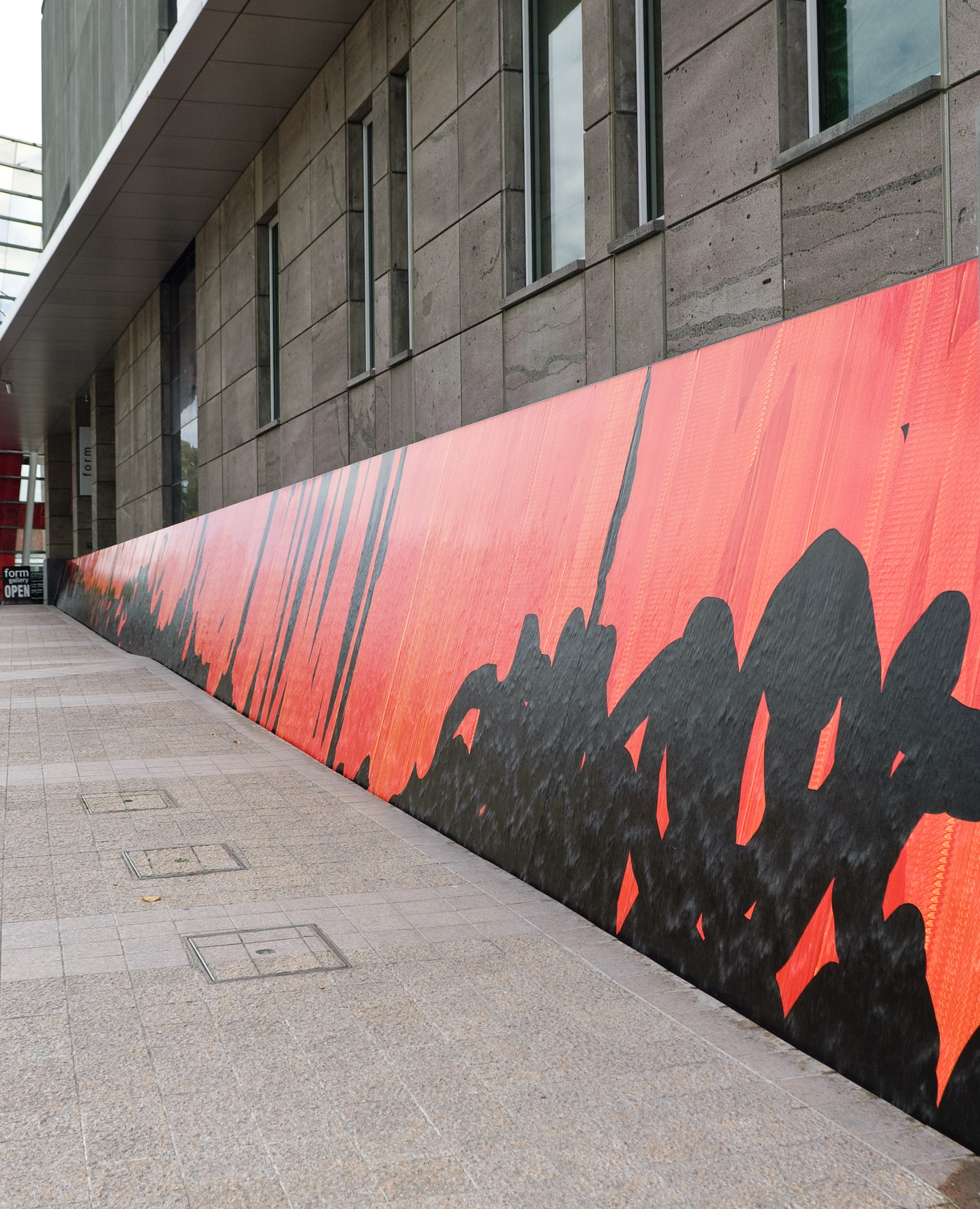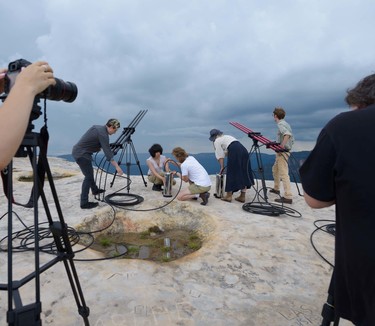
David Haines and Joyce Hinterding Alien Metaphysics (production still) 2014. Photo: Michael Myers
The World is an Abstracting Machine
Australian artists David Haines and Joyce Hinterding live and work in the Blue Mountains, New South Wales. Working in a collaborative partnership as Haines & Hinterding, they explore the unseen energies that surround us through an artistic practice that incorporates science, the occult and philosophy. Bulletin editor David Simpson spoke to the artists in October 2016.
David Simpson: Your work Geology began with a series of recordings made inside Christchurch Art Gallery while we were closed in 2011. Did you have an idea of what you were aiming to produce, or was it shaped by the experience and the things that you found inside the building?
David Haines: It was a profoundly interesting experience, actually. We were quite affected by it, and the documentation we got was extensive. We went in there with a lot of tools that are common to our field recordings – VLF antennas, video cameras, still cameras. But what was amazing was that it really brought into focus this idea of the aleatory nature of events during the earthquake. Our practice has always been tuned to chaos in a sense, and it rearranged the Gallery into these things that we could connect with.
We spent time in Christchurch around Christmas [2011] and saw the absolute devastation and the change in people’s feelings. We felt that we didn’t want to literalise the event but to think in a more open way about the kinds of energies that take place in an event like that.
We then put the project into a long hiatus – we put it to sleep for a while and then we came back to it, which was a good move because it became its own work in the end. But I think that the document we recorded that day is something that we may work with at some stage in the future when there’s even more distance. There was this really interesting idea about the institution being put into a deep freeze in some ways.
Joyce Hinterding: It was a very aesthetic experience. But literalising that experience wasn’t turning it into an artwork for us. Thinking about the forces that produced that situation, however, led us back into thinking about the landscape and the strange dynamics that exist underneath it. And so Geology is a digital realm that has three levels: the big, open landscape level and then two interior levels. One is like an optical anechoic chamber – kind of sucking light, reflecting light and messing with light, but with all these rocks floating around. In the process of making the work we started working with New Zealand rocks. Originally we had them in big galleries; we were working out how to get in and out of the spaces with the big rocks in them when we accidentally left a door open and they got out and started floating around in the space. We liked that so much we left them there and it became a kind of touchstone in the work, that the rocks have got inside the building. And the rocks all had the sounds of the electromagnetic field recordings from inside the Gallery.
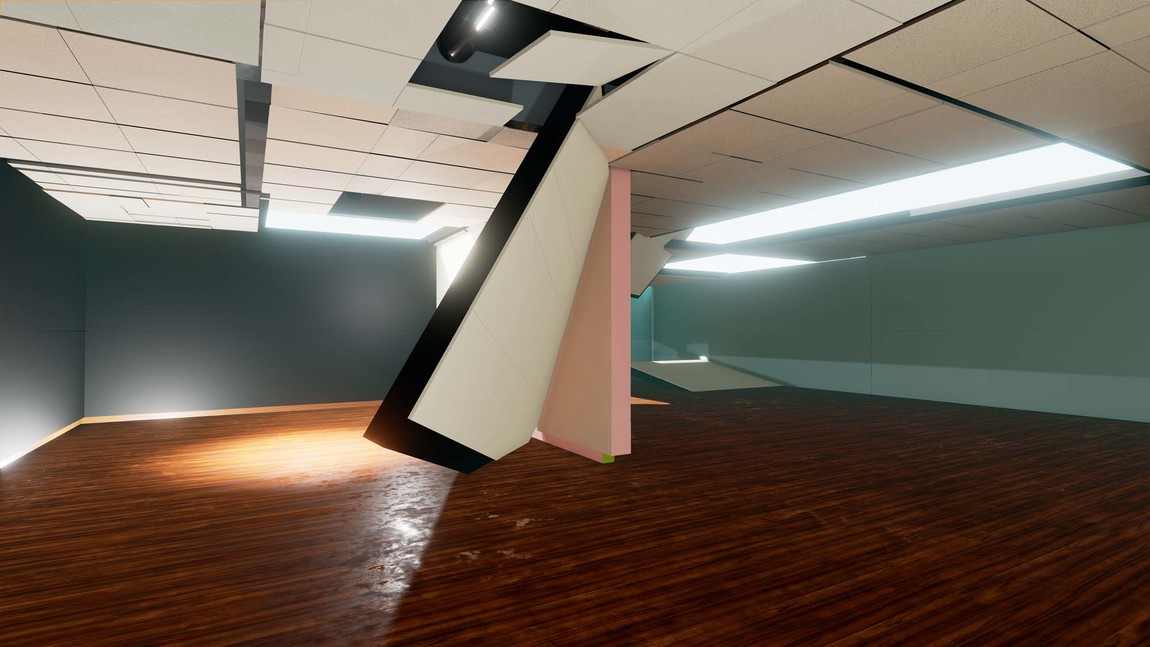
David Haines and Joyce Hinterding Geology (production still) 2015. Real-time 3D environment, 2 x HD projections, game engine, motion sensor, spatial 3D audio. Commissioned by the Museum of Contemporary Art Australia, supported by Christchurch Art Gallery Te Puna o Waiwhetū

David Haines and Joyce Hinterding Geology (production still) 2015. Real-time 3D environment, 2 x HD projections, game engine, motion sensor, spatial 3D audio. Commissioned by the Museum of Contemporary Art Australia, supported by Christchurch Art Gallery Te Puna o Waiwhetū
DH: The most important thing, I think, was a deeper question around synthesis, because humans feel like they own synthesis but of course everything is synthesising continuously. So this exploration of digital realms is one that helps us attempt to answer metaphysical questions about all kinds of processes through very direct experience.
Within the [digital platforms we use] we can manipulate things and then watch how they react, so it’s an experimental space. I really like that flexibility. The whole platform is a kind of terrain-mapping system. And then when it doesn’t look traditionally like a terrain it’s all about a coordinate system, which allows you to visualise things in three-dimensional space through abstractions. And of course, the
world is an abstracting machine: the minute that it begins to coalesce out of noise (because noise is the bottom line, it’s everything) it just differentiates itself into structure.
We’re using a lot of these mathematical systems that other, much cleverer, people have coded; parametric systems that are able to manipulate algorithms around magnitude and detail. So we’ve become the mediators of a vast synthesis machine really, which is very exciting as artists – it could be endless. It feels endless.
DS: Is this software the Unreal Engine, the gaming software that you use primarily?
DH: Yes. At its core, the Engine is a vastly abstract entity, which personally I don’t really want to know about; it would be, to me anyway, pathologically frightening to have a real grasp of how it works. But in a sense no one’s really a creator, they’re a mediator. We’re just moulding and shaping things. It’s an aesthetic platform for us. And although we’re deeply involved in its internals, in a sense the code also completely resists you. And that’s what’s interesting about it, this resistance to knowing everything.
DS: You’ve talked before about having to spend a lot of time battling [the Engine’s] compulsion to provide dead people.
DH: Thankfully things have moved on a little bit since then…
JH: On the third level of the game – it’s not a game, it’s an interactive work – is a white space with a very melancholy soundtrack. But when you touch the object in it, the object begins to collapse and once it starts, you can’t quite stop it. And I guess there’s that question about Christchurch being caught up in a global moment where, you know, it’s all changing and once it starts, it’s happening around you. But in our work it’s kind of beautiful and sad.
DH: Initially we had this idea about what it means when cultural formations come up against nature and the decks get incredibly shuffled – suddenly the institution gets reset and becomes this empty museum, and we can see the spookiness in all that. But when we were on the ground, it was very hard not to acknowledge the reality of these effects on people and, as outsiders coming to make a work, it seemed too glib and somehow banal to literalise that at the time. But certainly that idea is still a very resonant one and I think that thematic will appear again in our work.
There is a sort of stretch of energy – there are cultural energies and human energies and energies that belong to the internal workings of rocks…
JH: And environment.
DH: …and environmental energies. And of course the electromagnetic spectrum is a really important figure in our work. Looking at the [Energies exhibition] for some reason I see more of the science-fictional aspects of it all, in that there’s as much that is invented as there is actual phenomena driving into the work.
So we can have a structure like Aeriology, which is literally gathering energy out of the air, and then we can have the Reichian Cloudbusters, which are very speculative ideas about other states of matter, seen through this prism of weird psychoanalysis and sexual psyches and politics. And of course politics are also energies as well, so we’re lucky – that’s a very big palette right there.
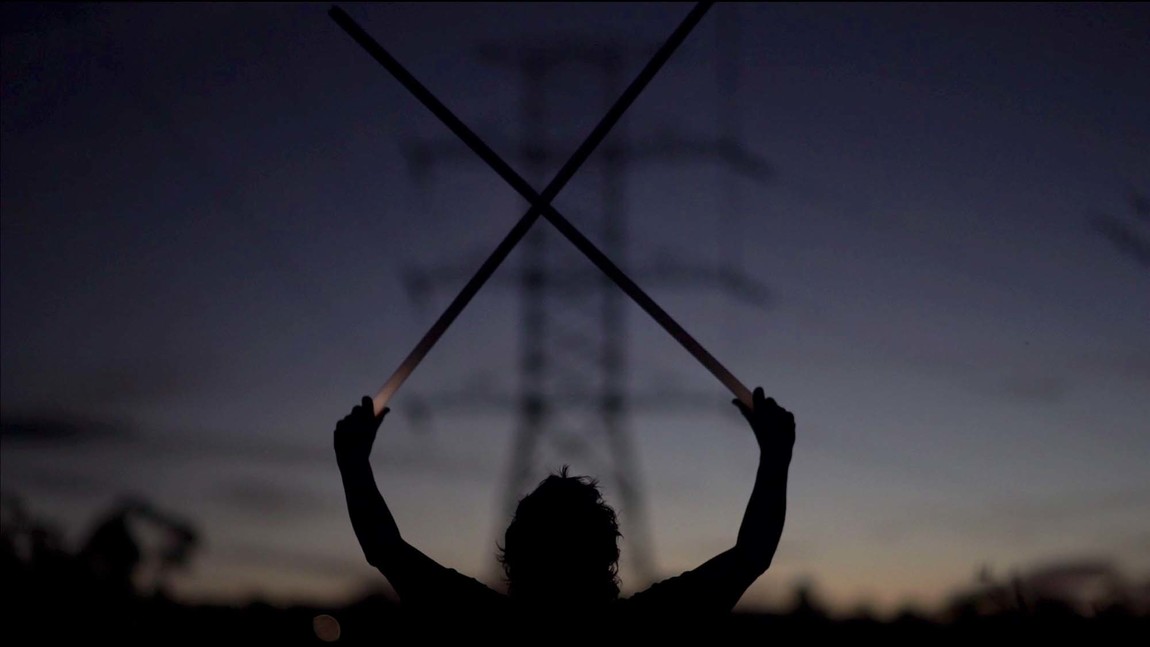
David Haines and Joyce Hinterding Encounter with the Halo Field 2009/15. Single channel video, sound, 3.38min. Commissioned by the Australian Network for Art and Technology and Art Monthly Australia, supported by the Australia Council for the Arts. Collection of Christchurch Art Gallery Te Puna o Waiwhetū, purchased 2015
DS: You’ve talked about the electromagnetic and about how, once you see the world through the electromagnetic, you’ll never see it in quite the same way again. So how do you see the world?
DH: Nothing is solid. I mean, you jump off a cliff and it feels pretty solid, but that’s gravity, isn’t it? Matter isn’t mattering anymore. There’s this dichotomy between matter and the ephemeral world, and suddenly everything’s quite ephemeral. Certainly my longstanding interest in aroma is because it is a frequency that you’re smelling in the far infrared part of the spectrum that has a profound effect on the senses. You’re smelling the stretch frequency of the molecules, and yet it has this profound sensory effect on beings that are tuned into it.
I think there’s a two-way street there – a bi-directional experience between molecules and atoms, and people. It’s easy to take out the human dimension, but in fact that’s the circuit. There are all these circuits that we have in a sensorial way, and artists are attuned to the senses because that’s how our work transmits and how it receives. We’re sensory beings. Someone the other day was remarking that we were embedded in the electromagnetic and I was thinking, ‘Well, that’s not true, we are the electromagnetic.’ That alone has to profoundly change any notion of ‘being’. It makes you realise that metaphysics can’t really be done any more in the old sense of the word, without actually factoring in some of the instrumentality of realist activities like science, and what science is able to uncover.
DS: This is very current science and something that’s changing constantly, but with works like the cloudbusters you’re rebuilding devices that are more historical, slightly more speculative. You’ve followed controversial German psychoanalyst Wilhelm Reich’s device for channelling orgone energy to change the weather, but are they active machines or are they symbols for something else?
JH: Cloudbusters actually work! Eva Reich came to Australia in the late seventies, early eighties. She took the cloudbusters to one of those festivals, and they blew holes in clouds and made it rain. If you look on the internet, you’ll find that there are people who are still ‘weather working’. I mean, Reich’s son Peter wrote The Book of Dreams about Reich’s life, at the end of his life. And he writes about travelling across the desert and fighting aliens with the cloudbusters. He believed that the cloudbusters were stealing the organic energy from the planet.
DH: [Laughs]
JH: The book is absolutely fantastic. I studied Reich when I was a student, and it’s always inspired me, and it inspired David as well. But the thing that really inspires us is the maverick thinking, it’s thinking out of the box, it’s thinking in slightly different ways. To a large degree his research has been discredited, but I think ‘weather working’ however, the idea of trying to control or manipulate the weather, would have to be about the most problematic concept that you can come up with. We were in an exhibition called The Trouble With The Weather, and it’s fascinating because the trouble with the weather is that we can’t control it. It seemed to us at the time that there was this fantastic conundrum around the weather and around devices and what they might do. It’s worth thinking differently, and if you could say one thing about Reich’s work, it absolutely encouraged us to think differently.
DH: But the thing about the cloudbusters is that they are kind of sci-fi phallic objects. That a student of Freud would produce these guns, which are somehow sensitively divining a kind of feedback system between earth and sky like a Heideggerian wet dream – that was an intended Freudian pun, you know. They’re fantastic artistic objects in that sense because they’re complicated, they’re paradoxical and, if they work (like the Malaysian government seems to think they do), they’re kind of terrifying as well. Reich was a product of his time – he thought it was fine to go out and try to draw in the positive orgone energy.
It’s a fantastic model for all kinds of research actually – fantasy and reality mixed together, and that complication to me is very interesting. Smarter people than I have proved that facts are just a combination of cultural and physical realities, brought together from many, many dimensions. The world is fantastically complicated. We claim certain things as being factual, but in fact it’s a very fluid set of multi-dimensions that drive into that, and the artwork is the perfect platform for this because it’s given the parameters to open up this conversation and try to complicate things.
JH: That work has provided so much discussion! I mean we’ve had the most bizarre and fantastic responses. It’s been absolutely fascinating, we get caught up in pseudoscience, we get told that sex affects the weather…
DH: There’s a lot on the internet around that work – people that are not part of the official commentary, like chemtrail busters. Google is this powerful eye on activities, and it opens up access to all these other cultures. But I think the reason why we wouldn’t turn it on, is just in case it really does work.
JH: Well, see, David’s a sceptic – sorry.
DS: I hear a difference of opinion there?
DH: But I won’t discount it, because the one time we did turn it on, almost by accident, it rained. We were very remorseful about that because it rained for four days. Would you make the earth die, or would you turn on the cloudbuster?
JH: There is also a question there about functionality and sculpture, and it ties the antenna works to the cloudbusters. Classically, sculpture is representational, it re-presents the world…
DH: Well, no, it’s also non-functional.
JH: But the thing about the antennas is that they look at the electromagnetic resonant properties of metal objects, wire shapes and forms, graphite – how they resonate and how they are, in a sense, functional. The cloudbusters, then, are sculptures that have this functional potential. And that’s part of their appeal, their aura; it’s part of how they work as a sculptural objects. That potential to be functional makes them rather curious.
DH: This complication between the non-functional and the functional within all of these works is something that I’m starting to try to articulate. The functional hasn’t been a traditional part of the narrative of art. Once an object slips into the functional it stops being art and it becomes a technical object or a design object or a religious object, for example. And this complication, this continual running up against functionality, is a very interesting frontier because it hasn’t been fully worked through yet. Of course, artists certainly don’t have an exclusive licence on creativity. That belongs to the whole world and the cosmos. But if we’re at the end of art, then for me, this is a very interesting side alley. I feel that the work very much stands out as an art object; it’s never built for any reason other than to be an art object, but it does contain these strongly functional aspects. And that is a very interesting challenge to more traditional notions of what modernism has been able to contain.
The other thing is, the reason that functionality exists is because in a way we’re occult diviners; we’re always interested in revealing things that are partially concealed and things that you don’t normally have access to. In a sense, they’re noumenal aspects of these things, so you can take a seemingly inert material like copper and show that, in fact, it actually is playing a whole other role in how the cosmos is working, which will happen regardless of whether you mediate it. And that’s what we’re doing. We’re putting on the beacons out there and saying hold on a minute, in your walls are these wires, humming.
The fact is that everything is kind of haunted by these things. And they may also have a kind of agency where we realise that they are just as powerful as we are. Even if they’re not, they’re still powerful and empowerment is at the essence of art. When Rothko takes pigment, he empowers a wine-blood sea on a canvas. And van Gogh really – he hit the yellow paint. What artists do well is empower experiences. Hey, energy in karma, that’s the riddle of it.
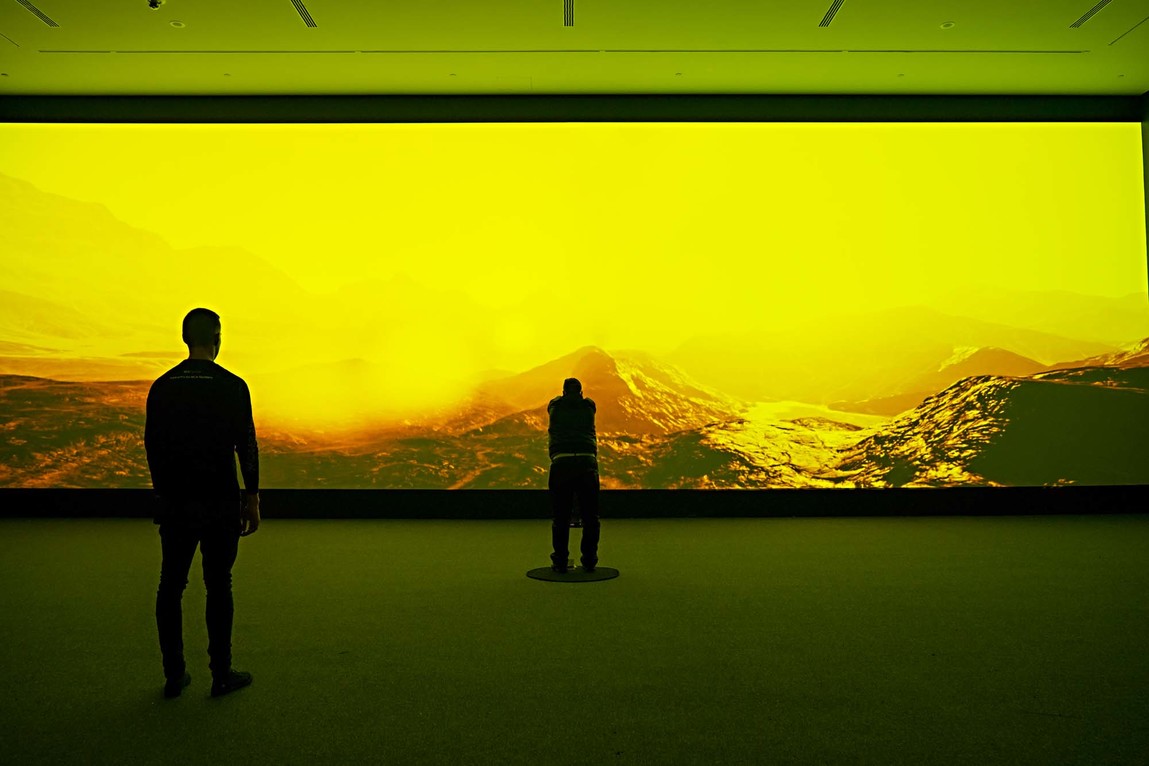
David Haines and Joyce Hinterding Geology 2015. Installation view, Energies: Haines & Hinterding, Museum of Contemporary Art Australia, 2015. Commissioned by the Museum of Contemporary Art Australia, supported by Christchurch Art Gallery Te Puna o Waiwhetū. Image courtesy of the artists and Sarah Cottier Gallery, Sydney. © the artists. Photo: Christopher Snee
DS: Everything around you, do you ever feel the urge just to switch it all off, to lock yourself in some kind of giant Faraday cage and just be away from it all?
JH: Yeah. What’s not going to Christchurch is Telepathy, which is the anechoic chamber. But we do a lot of bushwalking in the Blue Mountains, and we walk in order to listen to the VLF – the very low frequency kind of spectrum, that’s what you’d call natural radio. You need to be away from all of this, and so we do work on the counterpoint.
DH: When you get out in the wild country, a lot of these big structures are so beyond you that they really push you back – they’re hardcore. There’s a lot that resists that exploration, I guess, which is good. You appreciate them.
DS: So this very physical interaction with the landscape, it’s a deliberate strategy to counterbalance the more technical aspects of your work, as well as having a research, fact-finding and exploratory aspect?
JH: No, I think it’s a big part of who we are. It probably begins with that, rather than being a kind of contrived counterpoint. David was a rock climber for…
DH: Twenty-five, thirty years. In a week on a river you can learn about entropy and also about how monolithic things can be, things that will utterly resist you because their timeframes are completely different. You can learn more in that way in a week than in a year of reading. But it’s definitely how we put balance into our lives as well. That traditional desire to be outdoors is really special, and it’s something a lot of New Zealanders certainly appreciate. You have these great geographical realms to explore. Plenty of big things there for such a compact space. But the outdoors has always produced metaphysical reflection – it’s where the western notion of the sublime comes from. In our era we’re more able to deal with sensory overload than anyone could then. I mean, Immanuel Kant was positively frightened of smell, such a wimp. He should’ve done some Reichian therapy. We all favour sight and hearing above smell and touch, and that’s foundational. It’s how we’re taught about the sublime in art history. And I think that the sublime has to be redefined in our era through all kinds of things, through technology and through our capacity for our senses to be able to wire up experiences in different ways. There’s something about our landscape and our wilderness that really does make you feel small and pushes you back. It resists you, and it’s exciting when that happens.
Energies: Haines & Hinterding is on display at the Gallery until 5 March 2017. Organised and toured by the Museum of Contemporary Art Australia.









